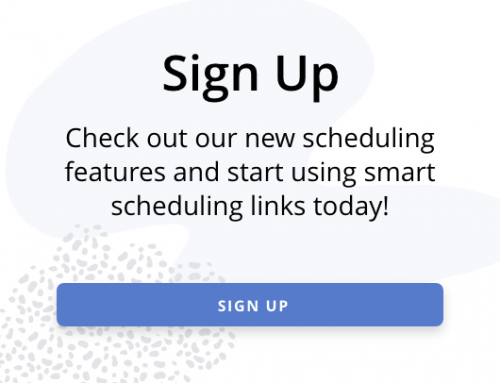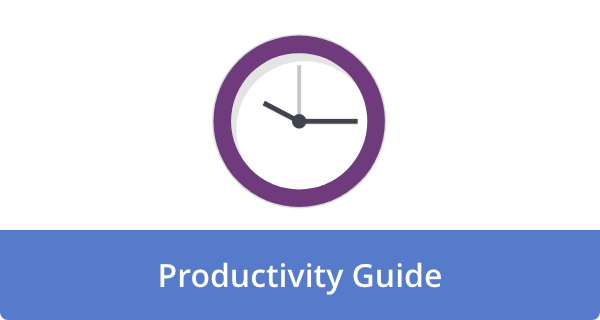

You probably do not need more motivation. You need fewer leaks. In a week packed with investor updates, hiring calls, and customer escalations, founders rarely lose time in big chunks. It drips out through context switching, reactive comms, and decision debt.
1) Set a single daily “needle mover” and guard it with an if-then plan
Pick one outcome that would make today a win, then write: “If it’s 9:30 to 11:00, then phone on Do Not Disturb, Slack snoozed, door closed.” Put the outcome on your calendar title, not the task. This gives your brain a simple binary: moved or not. If the day explodes, push the block, not the goal. The value is compounding progress on priority, not velocity on noise.
2) Create a meeting firewall with two rules
Cap internal meetings to two afternoons per week and require an agenda in the invite title. Decline or convert agenda-less calls to async updates by default. Leaders who do this often free a whole day without losing fidelity because decisions get made in pre-reads, not in airtime. The tradeoff is short-term friction while people adjust.
3) Timebox communication windows so you stop living in your inbox
Check email and Slack in three planned windows, like 11:30, 2:30, and 5:00, for 20 minutes each. Turn off badges the rest of the day. If you average 10 checks an hour now, that is 80% fewer switches. Even a conservative 30 seconds per switch yields 2.5 hours per week. The logic is cause-and-effect: fewer interrupts equals longer attention arcs.
4) Run a two-tier task system: runway and tower
Keep a short “tower” list of three strategic objectives and a longer “runway” list of operational tasks. Every morning, route today’s runway items under one tower objective or drop them. This prevents a day of quick dopamine wins that do not advance direction. It is a simple portfolio triage for your time.
5) Pre-engineer your environment to bias toward deep work
Put a second, clean user profile or desktop on your Mac with only the tools needed for creation. When it is focus time, switch profiles. Add a dumbphone or app-blocked phone nearby for 2FA and calls, and park your primary phone in another room. Environment design beats discipline because it removes options, not just urges.
6) Use decision caches to kill déjà vu choices
Log recurring decisions with a one-page template: context, criteria, options, chosen path, results. Next time, you start from the last learning, not from scratch. This reduces deliberation time and flip-flopping within the team. Where evidence is thin, write the uncertainty and the trigger to revisit, then move.
7) Move status to async and reserve sync for blockers
Adopt a crisp status memo format for teams: what changed, what is next, what is blocked, what you need. Share by 10 a.m. local. Hold shorter, purpose-built live huddles only for decisions or creative jams. People get their hours back, and you get a cleaner signal on real risks.
8) Write a team focus contract
Agree on quiet hours, response time norms, and escalation lanes. For example: quiet hours 9:30–11:30 and 2:00–3:30, chat replies within 4 business hours, urgent items via a single channel with “P1” tag. This converts personal hacks into shared infrastructure. Expect to iterate once you see edge cases.
9) Do a quarterly distraction audit
Pull last quarter’s calendar and communications. Tag each recurring event as create, collaborate, coordinate, or consume. Kill, cluster, or convert anything that does not align with the strategy. A founder I advised cut two recurring standing calls and reclaimed 3.5 hours weekly without any dip in throughput. The why is obvious: when you remove low-leverage loops, energy returns.
10) Match your work to ultradian rhythms, not vibes
Plan deep work in 90-minute bursts with real breaks away from screens. Use caffeine strategically at the start of a deep block, not as a rescue later. If you drift in afternoons, schedule sales calls or customer interviews then. You are aligning effort with biology, which raises output without extra hours.
11) Install a one-tap reset ritual for when the day goes sideways
When you get derailed, do this immediately: stand, breathe 4-4-6 for 60 seconds, write the following action, then start a 10-minute timer. This tiny re-entry protocol matters because it converts shame spirals into motion. Even bad days can yield one consequential block if you lower the activation energy.
12) Protect sleep and morning light like a revenue line
Set a nonnegotiable sleep window and get outdoor light within one hour of waking. Put late-night Slack and email behind app limits. Most founders run chronic sleep deficits that feel normal until they no longer do. Better rest shortens the time to clarity and raises the ceiling on deep work quality tomorrow.
13) Keep a “parking lot” page for ideas that show up mid-focus
When your brain tosses a shiny idea during a sprint, park it on a persistent note with a timestamp. Promise yourself a review after lunch. This lowers the fear of forgetting that fuels self-interruptions. Paradoxically, you capture more innovation by quarantining it until the work block ends.
14) Batch external availability into office hours
Offer two weekly blocks where investors, advisors, or candidates can grab 15 minutes. Keep both blocks adjacent to existing meeting clusters. You stay accessible without surrendering your mornings. The practical benefit is predictable reachability that does not fracture your attention map.
15) Use constraints to speed creative work
Define a maximum slide count, word count, or meeting time before you begin. For product briefings, try “one page, four sections, 20 minutes.” Constraints trim meandering work and force faster synthesis. When time is the scarcest resource, rules that reduce degrees of freedom are an advantage.
16) Pre-write “no, for now” replies you can paste with integrity
Draft three versions: polite decline, defer with date, and trade option. Example: “Thanks for thinking of me. I cannot take this on this quarter. If useful, send a brief and I will share async notes.” You save minutes per ask and keep relationships intact. Small frictions removed add up.
17) Treat your calendar as a product with a weekly retro
On Fridays, ask: what blocks produced results, where did I overcommit, and what did I protect well. Adjust next week’s template. One founder I work with moved all one-on-ones to alternating weeks and gained a full 6-hour maker day every other Friday. You iterate your schedule like you iterate your roadmap.
18) Keep a visible scoreboard for focus metrics
Track just three numbers: deep blocks completed, unplanned meetings added, and comms windows honored. Put the count on a whiteboard in your office or at the top of your weekly plan. What you measure changes. If you miss a target, inspect the cause and change the system, not your self-talk.
19) Co-work for accountability once a week
Book a 2-hour virtual or in-person focus session with a peer founder. Share goals for the block, mute, work, then debrief for five minutes. It feels small, yet the social contract increases start rates on complex tasks. When the stakes are high, a little social friction helps you start sooner.
20) Make recovery visible to your team
Put workouts, therapy, or family blocks on your shared calendar. Leaders who model boundaries make it safer for teams to do the same, which reduces after-hours pings. The result is a healthier baseline that sustains output through volatile quarters, not just good weeks.
Final thoughts
You hire for leverage. Treat your attention the same way. Pick three of these tactics, implement them for two weeks, and run a Friday retro. Expect awkwardness at first. Then notice the quiet wins: one more hard problem solved before lunch, fewer reactive loops, a calmer team. Your calendar will still be full. Your work will finally be focused.
Image Credit: Photo by Oleksandr Plakhota: Pexels











Deanna Ritchie
Editor-in-Chief at Calendar. Former Editor-in-Chief and writer at Startup Grind. Freelance editor at Entrepreneur.com. Deanna loves to help build startups, and guide them to discover the business value of their online content and social media marketing.